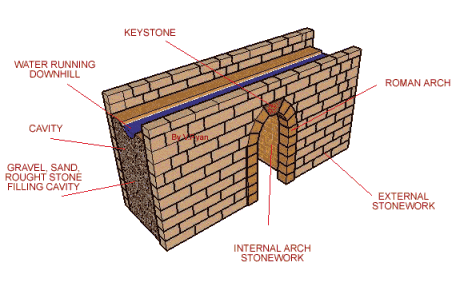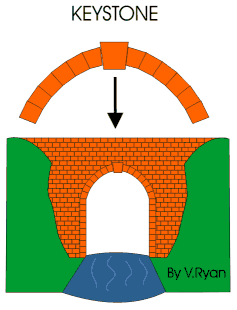| CLICK HERE FOR INDEX PAGE | |
| TYPICAL ROMAN STONE ARCH CONSTRUCTION | |
| V. Ryan © 2006 - 2009 | |
| PDF FILE - CLICK HERE FOR PRINTABLE WORKSHEET | |
|
The Romans introduced stone arch technology over two thousand years ago. They applied to bridges they constructed across the known world and examples can still be seen today. The technology they used has stood the test of time and some Roman construction methods are still used today. The arch is an prime example of Roman technology that is still used world wide even though modern materials are now used. A basic example of the construction of a typical Roman Stone Arch is shown below. |
|
|
|
|
|
As described on previous sheets, a wood frame was first constructed in the shape of an arch. The stone work was built up around the frame and finally a keystone was set in position. The wood frame could then be removed and the arch was left in position. Stone arch technology was used even on Roman monuments such as the Colosseum in Rome. Many of the monuments built with stone arch technology can still be seen today, such is the strength of the arch. |
|
 |
|
|
Stone arches are not built entirely from stone. Stone is as expensive today as it was in Roman times. The Romans had a great understanding of material costs and consequently constructed stone bridges and viaducts from a combination of materials. The diagram above shows that accurately cut and shaped stone was used for the external walls. Gravel, sand and rough stone was used to fill all cavities. This filling was cheap to produce and use, compared to cut stone and it could be used by unskilled labour to fill the cavities of structures such as bridges and aqueducts. |
|
| CLICK HERE FOR STRUCTURES INDEX PAGE | |
